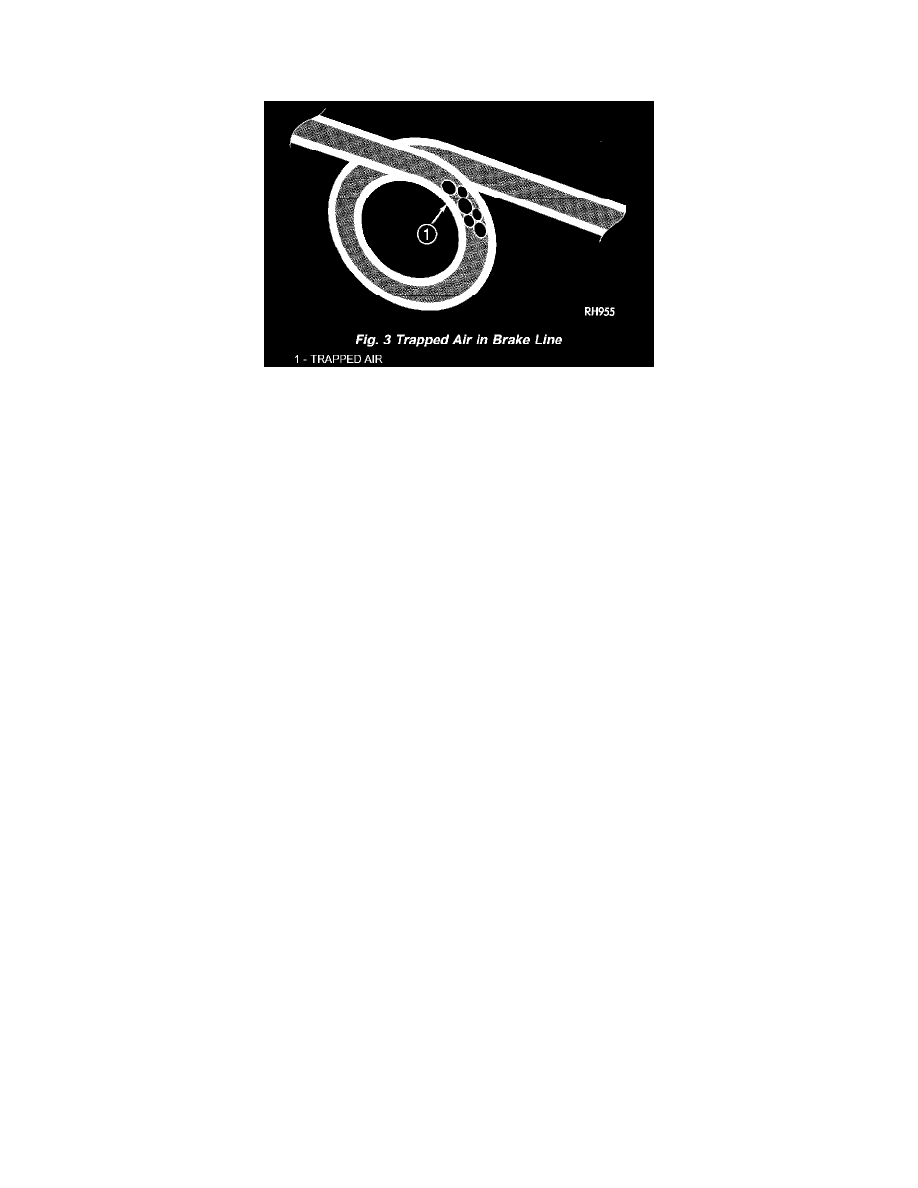Intrepid V6-2.7L VIN R (2003)

5. Starting at the first wheel circuit as listed earlier, attach a clear hose to the bleeder screw at that wheels brake caliper or wheel cylinder and feed
the other end of hose into a clear jar containing enough fresh brake fluid to submerge the end of the hose.
CAUTION: Open the bleeder screw at least one full turn when instructed. Some air may be trapped in the brake lines or valves far upstream, as
far as ten feet or more from the bleeder screw. If the bleeder screw is not opened sufficiently, fluid flow is restricted causing a slow, weak fluid
discharge. This will NOT get all the air out. Therefore, it is essential to open the bleeder screw at least one full turn to allow a fast, large volume
discharge of brake fluid.
6. Open bleeder screw at least one full turn or more to obtain an adequate flow of brake fluid.
7. After 4 to 8 ounces of brake fluid has been bled through the brake hydraulic circuit, and an air-free flow (no bubbles) is maintained in the clear
plastic hose and jar, close the bleeder screw.
8. Bleed the remaining wheel circuits in the same manner until all air is removed from the brake hydraulic system.
9. Check brake pedal travel. If pedal travel is excessive or has not improved, some air may still be trapped in the hydraulic system. Rebleed the brake
system as necessary.
10. Reinstall all 4 bleeder screw dust caps.
11. Test drive vehicle to ensure brakes are operating properly and pedal feel is correct.
